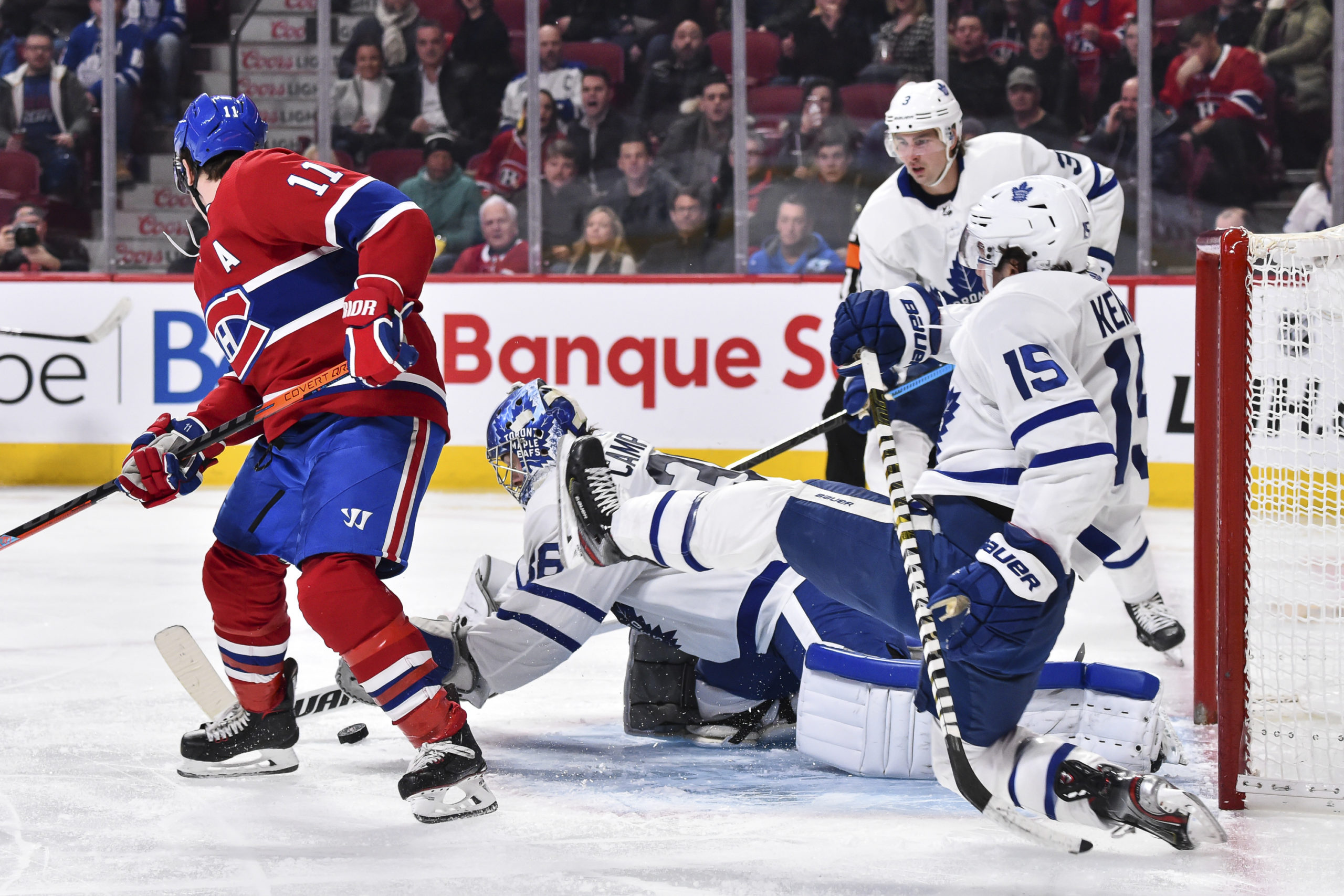Welcome to this week’s edition of Leafs Musings. If this article is anything like how the Toronto Maple Leafs play, you’ll enjoy the first two-thirds but find the final part horrendous.
Today, we’ll start with my take on the Jack Campbell and Kyle Clifford acquisitions as well as the departure of Trevor Moore. We’ll finish off with some thoughts on a possible addition (and/or subtraction) to the Maple Leafs defense before the February 24 trade deadline.
Thoughts on the Jack Campbell Trade
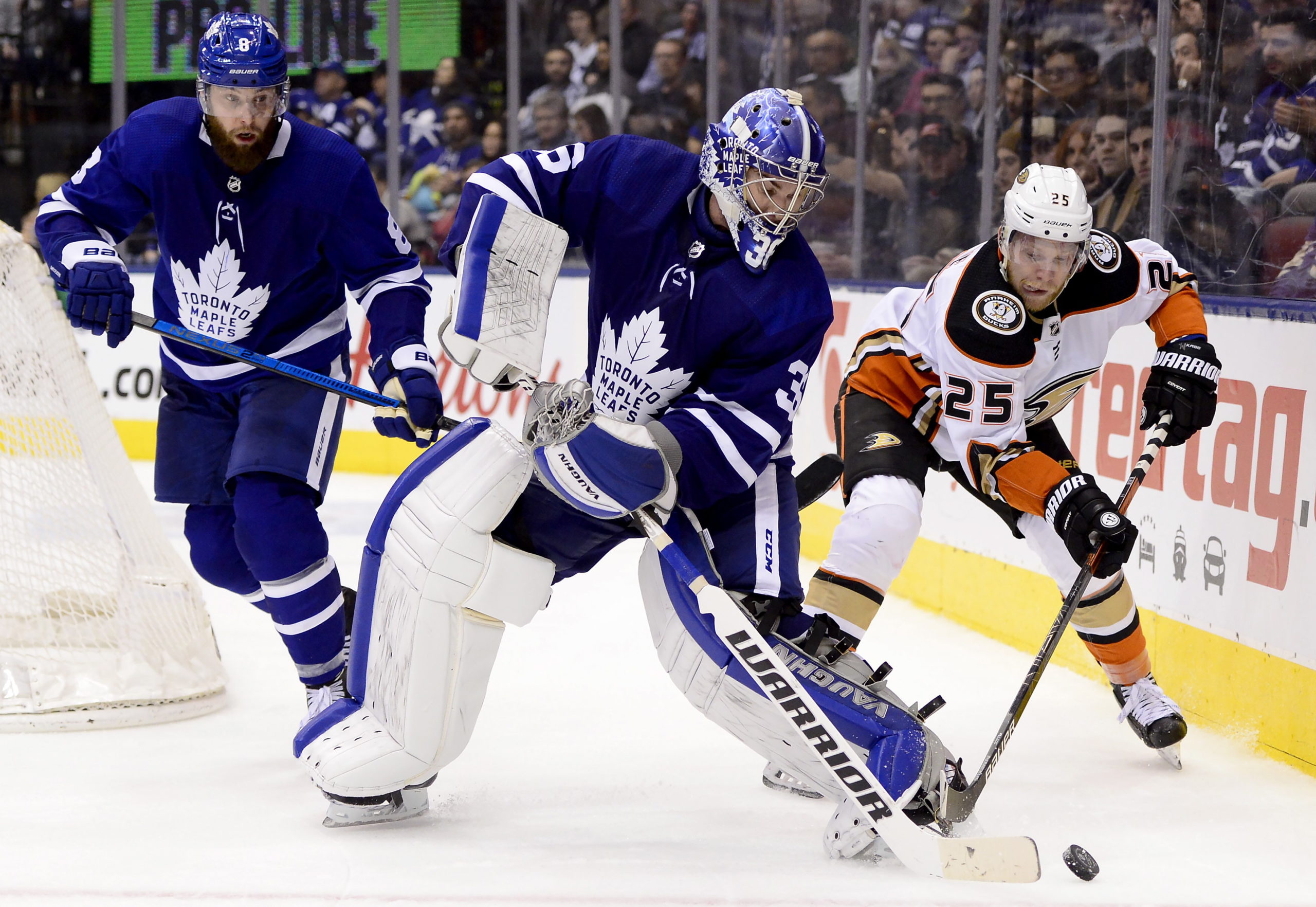
Everyone knew it: The Leafs were in desperate need of backup goaltending. With every point so critical at this stage of the season, Michael Hutchinson‘s .886 save percentage simply wasn’t going to cut it any longer. Heading into a back-to-back without Frederik Andersen, it was time for Kyle Dubas to pull the trigger on the best deal he could find.
With Jason Spezza, Adam Brooks, Frederik Gauthier, Dmytro Timashov, Pontus Aberg, Kenny Agostino, Mason Marchment, Nic Petan, Egor Korshkov, and Jeremy Bracco on the depth chart, the Leafs are loaded with potential fourth-line wingers. The Leafs barely play their fourth line anyway now, and any of these players could play five minutes if needed. The backup goaltender is of far more importance to this organization in terms of wins and losses. The trade for Jack Campbell reflected that fact.
In acquiring Campbell, the Leafs traded for a mystery box. The 28-year-old posted a stellar .928 save percentage across 31 games last year only to fall to a .900 save percentage with the Kings this season. Nobody has any idea how good he will be over the long-term — not even Dubas, who once paid a haul to acquire Campbell in the OHL only to watch him struggle greatly as a rental. He could be a great backup on a bargain contract for the next 2.5 seasons, or he could play exactly like Hutchinson’s played this season. Let’s hope for the former.
Through two games, I certainly feel more comfortable with Campbell in net than I ever did with Hutchinson. Campbell also seems like an outstanding teammate and he’s easy to root for from a fan perspective. There’s a long way to go here — he’s only played two games — but there are certainly reasons to be optimistic thus far.
As for Trevor Moore, who I wish the best for in Los Angeles, he was one of my favourite players to watch on the Leafs. Similar to Connor Brown in Ottawa, I expect him to take on a bigger role with his new club and rack up more points in the process. He’s great on the forecheck and as a takeaway specialist, which makes him an underrated play driver at 5v5. While he doesn’t have a ton of scoring talent, I think he can play on a third line, or at least stand out as a high-end fourth-line winger.
Moore had value to the Leafs, especially given his $775k cap hit, but the team was desperate enough for goaltending to make him expendable. I’m glad that he gets to join his hometown team, but I’ll miss watching him play in blue and white.
I also like this deal for the Kings. They acquired three solid future assets in exchange for their backup goaltender and a rental winger. I have no idea how good Campbell is, so I’m in “wait and see” mode in terms of whether or not I think this was a win-win trade. So far, so good thus far.
What Kyle Clifford Brings to the Table
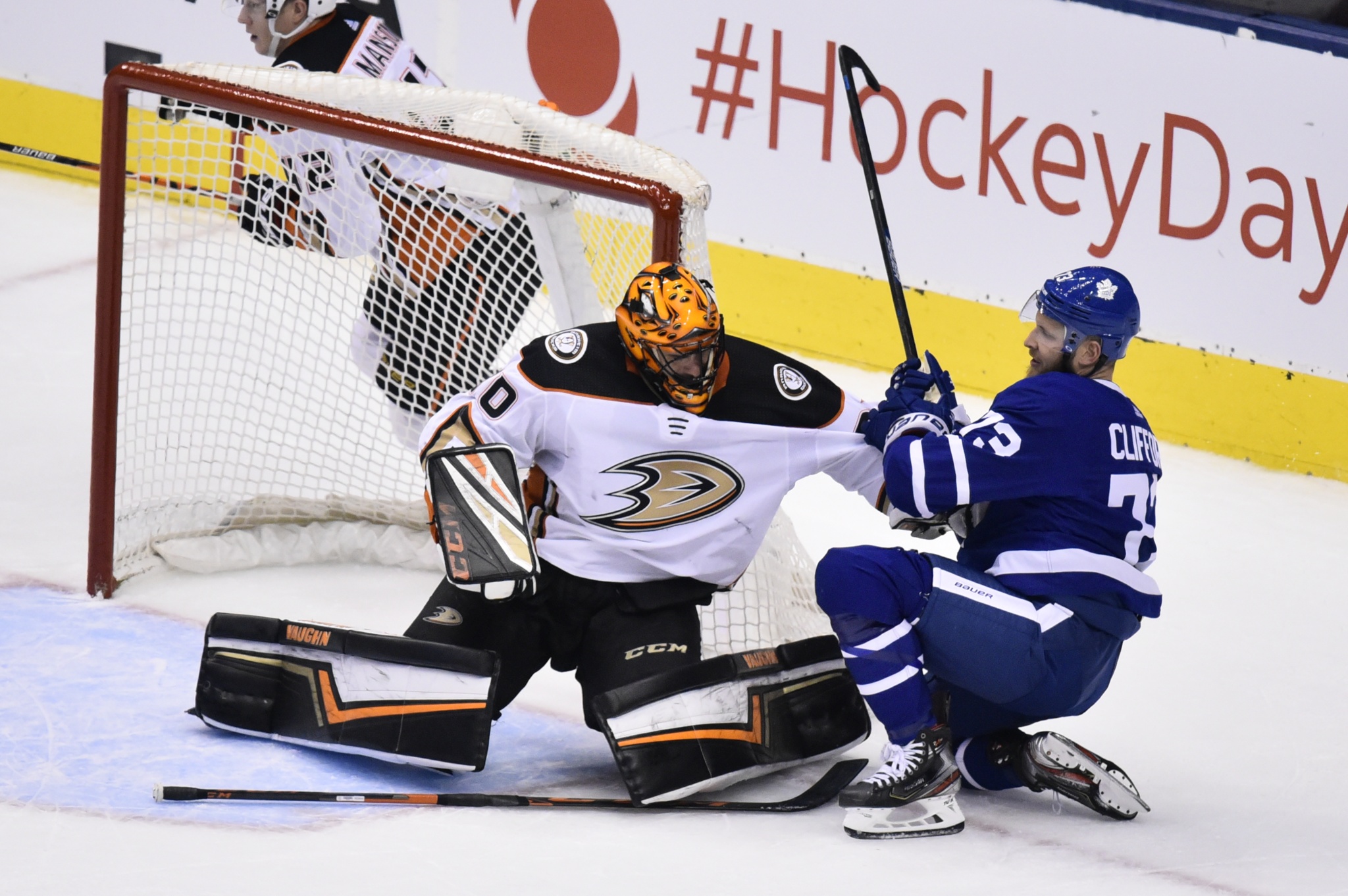
It’s nice to have a fighter. I’m not completely convinced that having a fighter changes all that much from a wins-and-losses perspective, but it’s still nice to have a fighter. It’s also clear that Kyle Clifford can play a little bit, too; while he doesn’t score all that much, he grades out extremely well in play-driving metrics such as MAGNUS and RAPM. Clifford is bound to be a popular Leaf and I’m interested to see if he can be Zach Hyman-lite by getting in on the forecheck and winning physical battle after physical battle.
My fear is that Clifford is the exact type of player that metrics like MAGNUS and RAPM overrate knowing that shot quality is judged solely on shot location rather than pre-shot movement. Clifford isn’t exactly a high-end playmaker; from what I’ve seen, he’s guilty of tunnel vision at times. Still, at worst, he’s a perfectly-capable fourth line player who brings a physical presence the Leafs didn’t have. The best-case scenario is that he ends up as some sort of Hyman-lite play-driving God who the Leafs re-sign for a bargain. At this point, I see him as a better version of Matt Martin.
I look forward to watching Clifford play down the stretch, but I’m a little bit worried about the price tag on his next contract. Mason Marchment scored five goals in a two-game span with the Marlies this weekend as if to say, “Please don’t extend Clifford, I want that job next year!”, and Marchment is bound to make close to the league minimum. Down the stretch, I’ll be watching to see if Clifford is half-as-good as the play-driving metrics suggest or if he’s more of a fourth-line player who is not worth using extra cap space for. At this point, it’s too early to say either way.
Addressing the Defense at the Trade Deadline
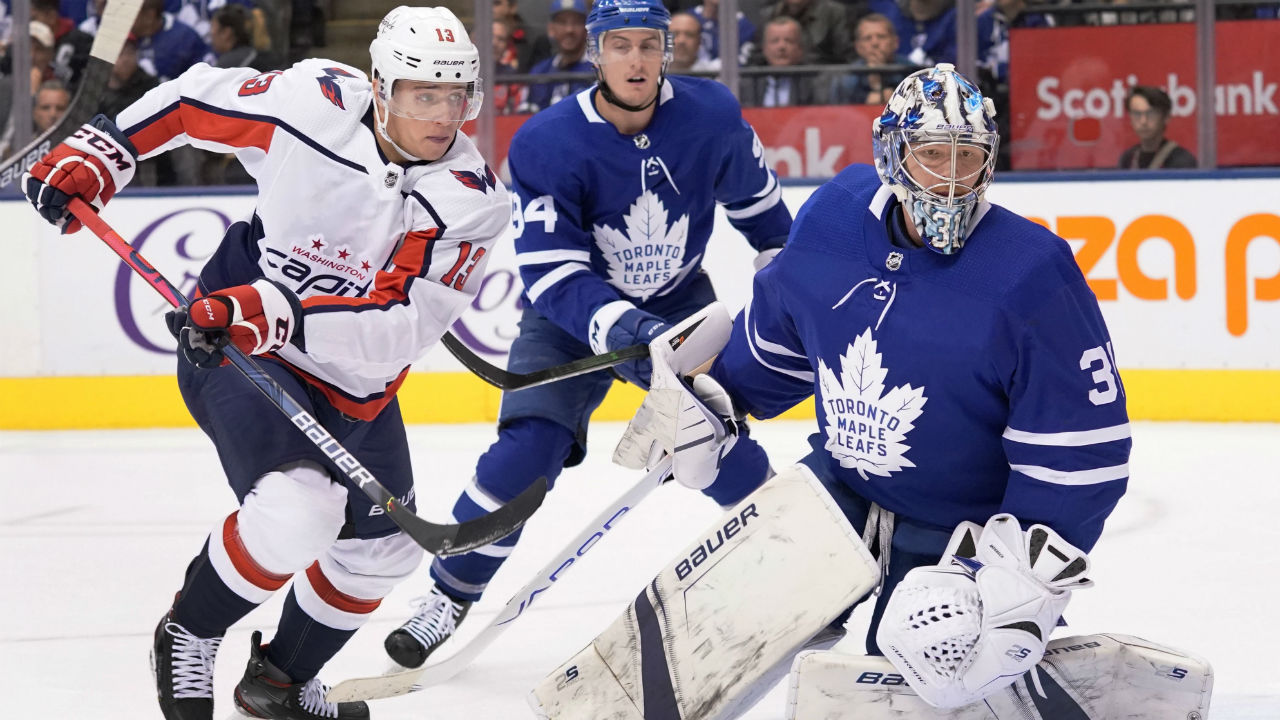
Just about every single person agrees that the Leafs are a highly-talented offensive team with serious defensive concerns. While I’m fine with winning 5-4 rather than 2-1, the Leafs constantly make their life more difficult by giving up too many goals against. When you give up three-plus goals on a regular basis, the margin of error becomes awfully small and you’re going to run into goalies who simply aren’t going to give up four. The Leafs shouldn’t be trying to win games 2-1, as that’s simply not their strength, but they should be trying to win games 5-2.
Here’s the problem: If the Leafs make a trade for a rental, it’s unlikely to be for a significant upgrade. I’m a believer that Rasmus Sandin and Timothy Liljegren can play at the NHL level right now — they’re the most likely players to leave the lineup if an acquisition occurs. Keeping Cody Ceci out of the lineup would be a major addition by subtraction, but as long as he’s not playing, I’m relatively happy. I’d let Liljegren play until Rielly returns before running a six-man unit of Muzzin, Rielly, Holl, Barrie, Dermott, and Sandin come playoff time. Frankly, Sandin is too good to keep out of the playoff lineup.
Trading for a controllable piece is also an option, but if the Leafs extend Jake Muzzin, they already have Muzzin, Rielly, Holl, Dermott, Sandin, and Liljegren for next year. The question becomes: Who would be the odd man out? I don’t love the idea of keeping Liljegren in the AHL all of next season and I certainly don’t want to trade Dermott for pennies on the dollar.
The Leafs desperately need a shutdown defender of Muzzin’s calibre for next year, but if his price tag becomes excessive, it could make more sense to fill this need in a trade. He turns 31 this month, and while the Leafs probably want him on a four-year deal, I won’t be surprised if it takes five. I expect his AAV to be around $6 million and it’s not clear how much trade-protection he will want. I’d love to keep him on a four-year deal, but if his price tag does become excessive, the Leafs will have to make a trade for another shutdown defender. As we saw when Muzzin was injured, there’s no one on the roster who can fill his shoes.
Minnesota’s Jonas Brodin is under contract for this season and next and grades out very well defensively in terms of RAPM. Trading for him would be nearly identical to the Muzzin trade from a year ago, although I imagine that the price would be slightly less. The Leafs would certainly benefit from having two shutdown defenders on their roster for the remainder of the season and could then use Brodin to replace Muzzin next season.
Another option is Damon Severson of the New Jersey Devils. Unlike Brodin, he wouldn’t potentially replace the left-handed Muzzin next season, but he would add a valuable right-shooting defender to the team. Severson is 6’2″ and has always been a capable puck mover, but he’s graded out far better defensively this season in terms of RAPM. He’s only 25, and given that he’s controllable through 2022-23, the asking price would start with Kasperi Kapanen. While I’m not 100% confident in Severson’s ability to excel in a shutdown role quite yet, I have liked what I have seen from him in recent games. He’s passed my eye test thus far.
Josh Manson would be a perfect fit, but after Elliotte Friedman reported that one GM said, “your wife does not love you as much as the Ducks love him,” he seems unlikely to be moved. Matt Dumba seems like a more realistic target, but the idea of trading a haul for him makes me awfully nervous. He profiles exactly like Tyson Barrie as a shot-happy offensive-defenceman who is probably not best suited for a shutdown role; this profile tends to get overvalued (points pay!). With just 18 points in 54 games this year, it’s possible that his trade value has fallen enough to warrant a move, but I wouldn’t make a Godfather offer.
I’d seriously consider moving Tyson Barrie. At the time of the Kadri trade, the Leafs were coming off of a season with Ron Hainsey, Nikita Zaitsev, and Igor Ozhiganov as their right-shooting defensemen. They looked to be in desperate need of a high-end puck mover who could play on the right side, and Barrie was just that. We didn’t know that Holl was going to play or be this good, and we didn’t know that both Sandin and Liljegren would take big steps forward. With Rielly, Muzzin, Dermott, Sandin, Liljegren, and Holl in the organization, the Leafs simply do not have the same puck-moving issues that they had last year, especially now that Ceci is out of the lineup.
When Muzzin is out of the lineup, everyone’s job becomes more difficult. We saw Travis Dermott play tough minutes that were a little bit out of his comfort zone, while the Leafs also have to account for Muzzin’s minutes on the penalty kill. If Barrie was ever out of the lineup, everyone’s job would suddenly become easier. All of the sudden, there would be more sheltered minutes to go around and players like Sandin and Liljegren would see their point production spike with more power-play time. I do think that Barrie’s value to the Leafs increased the minute that Rielly was injured, but I just don’t see where he fits next year. That’s a lot of value to let walk out the door.
I’d consider trading Barrie for someone like T.J. Brodie, who is just as good as Barrie but brings more to the table defensively. A Rielly-Barrie pairing terrifies me come playoff time, especially when the Leafs won’t control the matchups on some nights against opposition like David Pastrnak and Nikita Kucherov. I’d also consider trading Barrie if part of the return could significantly help Dubas acquire a more controllable player like Brodin. While I still think that Barrie is a pretty good player, I believe he’s the #1 contributor to Toronto’s defensive problems. I’d at least explore the market to see if you can get the perfect return for him.
Final Thoughts
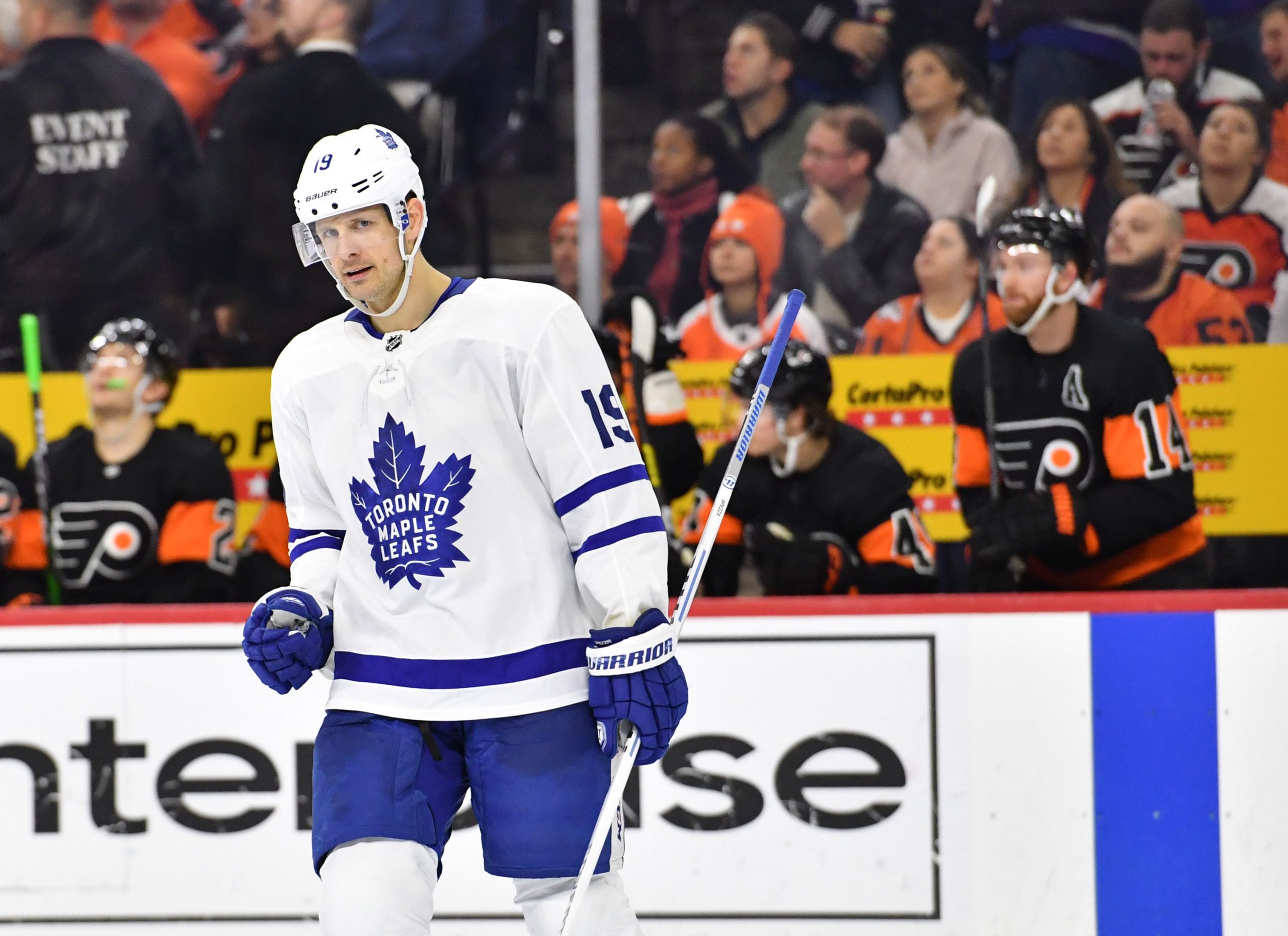
- The Johnsson-Engvall-Kapanen line desperately needs to add a playmaker. Alexander Kerfoot has been fine on the Tavares line, but he’s most valuable as a two-way center and he would help to set up a few more goals on the third line. Both Johnsson and Kapanen, who played under Keefe with the Marlies, haven’t scored much since Keefe took over. He needs to do something to help get them going.
- Andreas Johnsson was awful in his first few games after coming back from injury, but he looks like himself now. I wouldn’t take him out of the top six when Nylander returns; he’d be a great replacement for Kerfoot in the top six. He doesn’t have the transition skill to carry the third line, but he plays a hard-nosed style that complements both Tavares and Matthews well.
- I’d love to have Jason Spezza back next year and I can’t believe that he was nearly on waivers earlier this season. He’s currently on a 39-point pace despite playing under 11 minutes per night. He gives the team a strong right-handed faceoff option, and while he doesn’t kill penalties, they have plenty of other good options there. His third-period goal against the Ducks was massive, and by all accounts, his teammates seem to love him. I’m not sure what Mike Babcock was thinking earlier this season.
- The Leafs have run into more than their fair share of strong goaltending performances lately, which is the main reason for their struggles. While they can’t control this, there are plenty of improvements that are under their control. They’ve been horrendous with third-period leads of late, which was largely due to stupid decisions and minimal attention to detail. Up two goals against Florida in the third, Cody Ceci can’t completely botch a bank pass in his own end. Up two goals in the third against Anaheim, the second power-play unit can’t concede a goal shorthanded. Rasmus Sandin should have just dumped the puck in rather than making a dangerous pass, Andreas Johnsson should have done the same, and Kasperi Kapanen needs to at least consider the defensive side of the game as he reads the play from the side-boards. Rather than pushing the play while managing the game properly, they decided to adjust for these mistakes by completely turtling for the whole third period against Montreal. It’s time to play with some confidence and attention to detail with the lead.

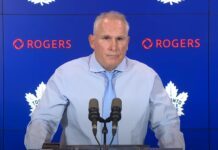




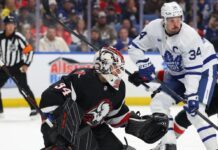
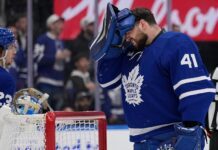
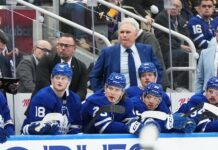


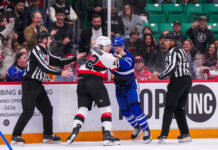
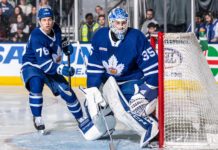

![John Gruden after the Leafs prospects’ 4-1 win over Montreal: “[Vyacheslav Peksa] looked really comfortable in the net… We wouldn’t have won without him” John Gruden, head coach of the Toronto Marlies](https://mapleleafshotstove.com/wp-content/uploads/2025/09/gruden-post-game-sep-14-218x150.jpg)







